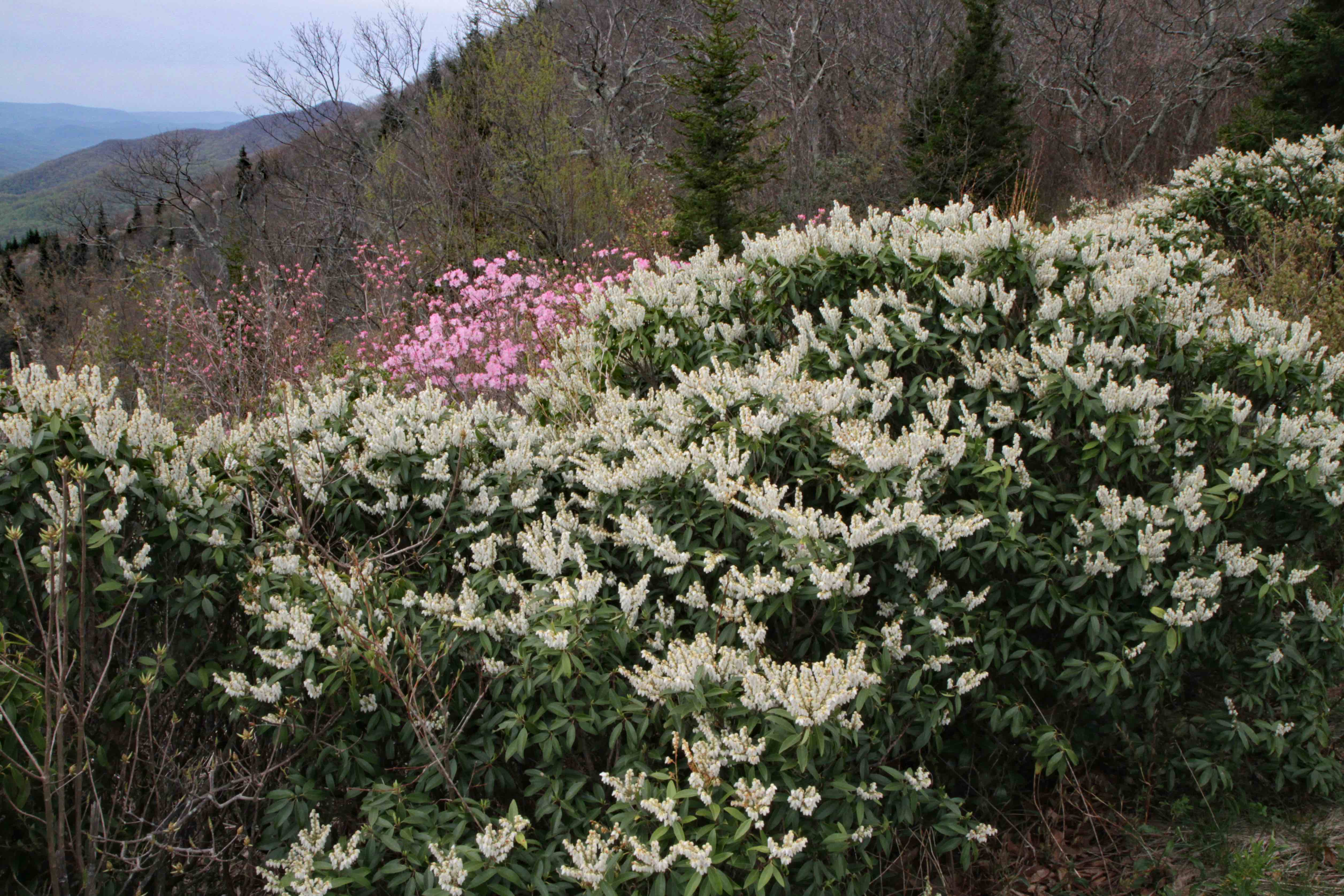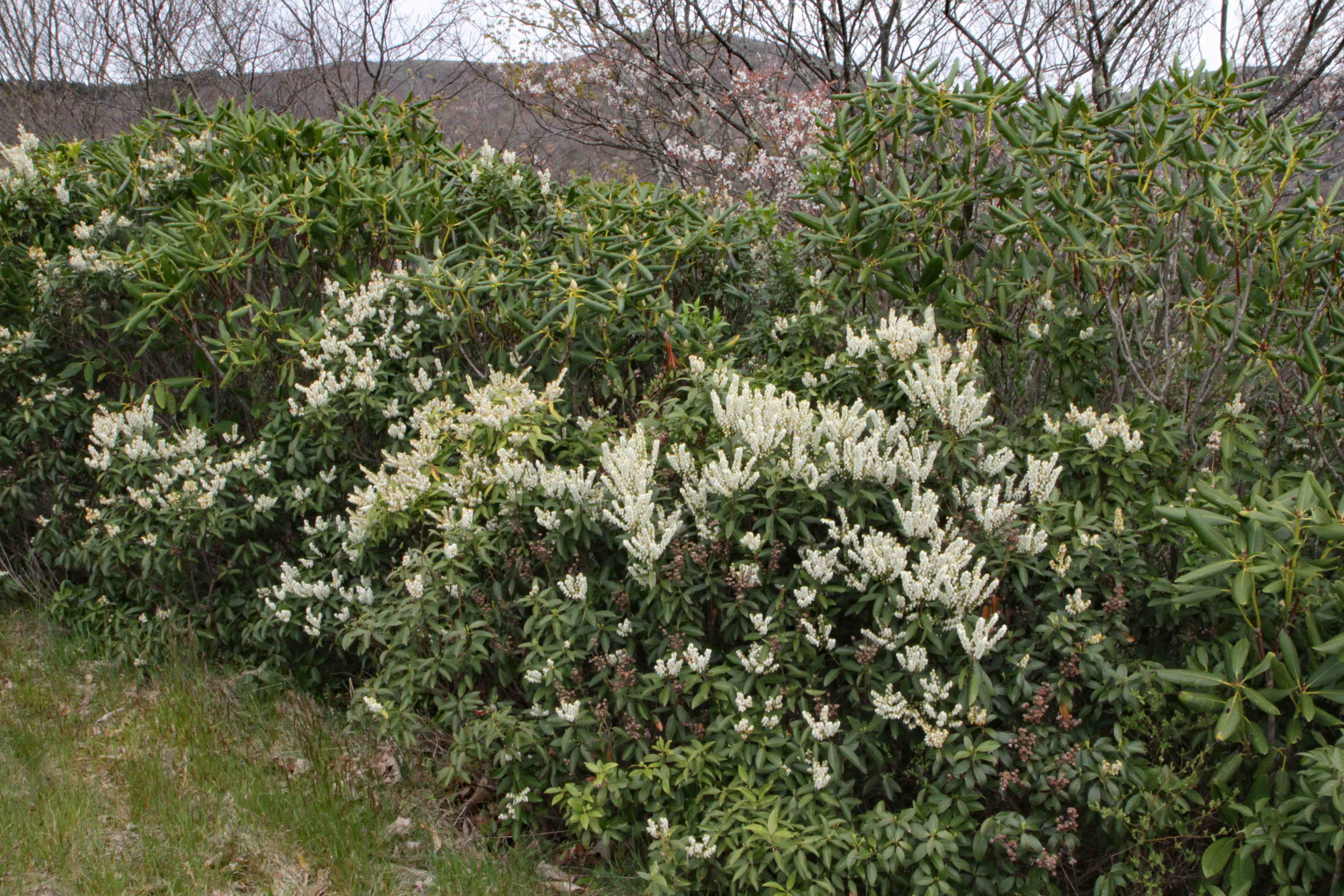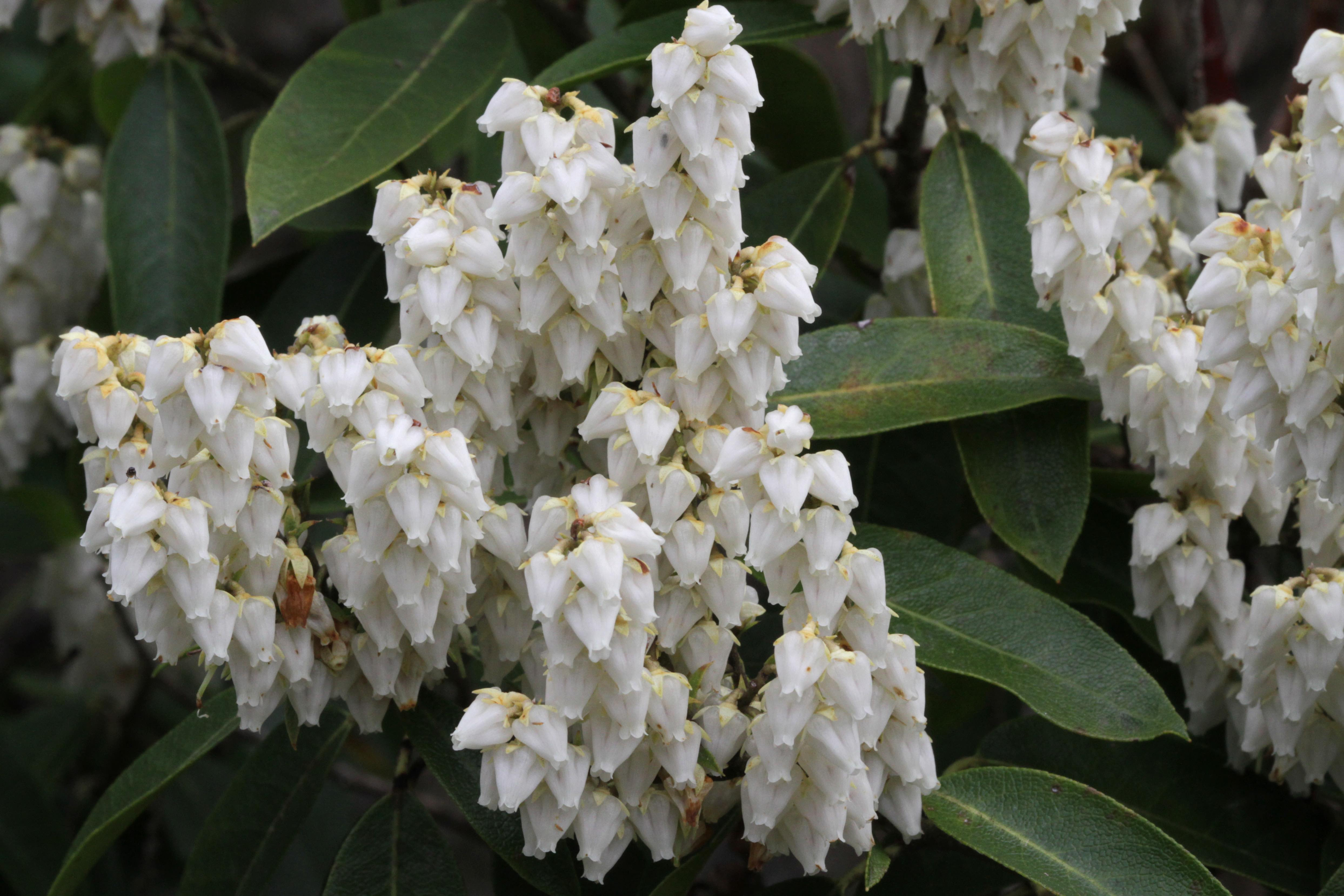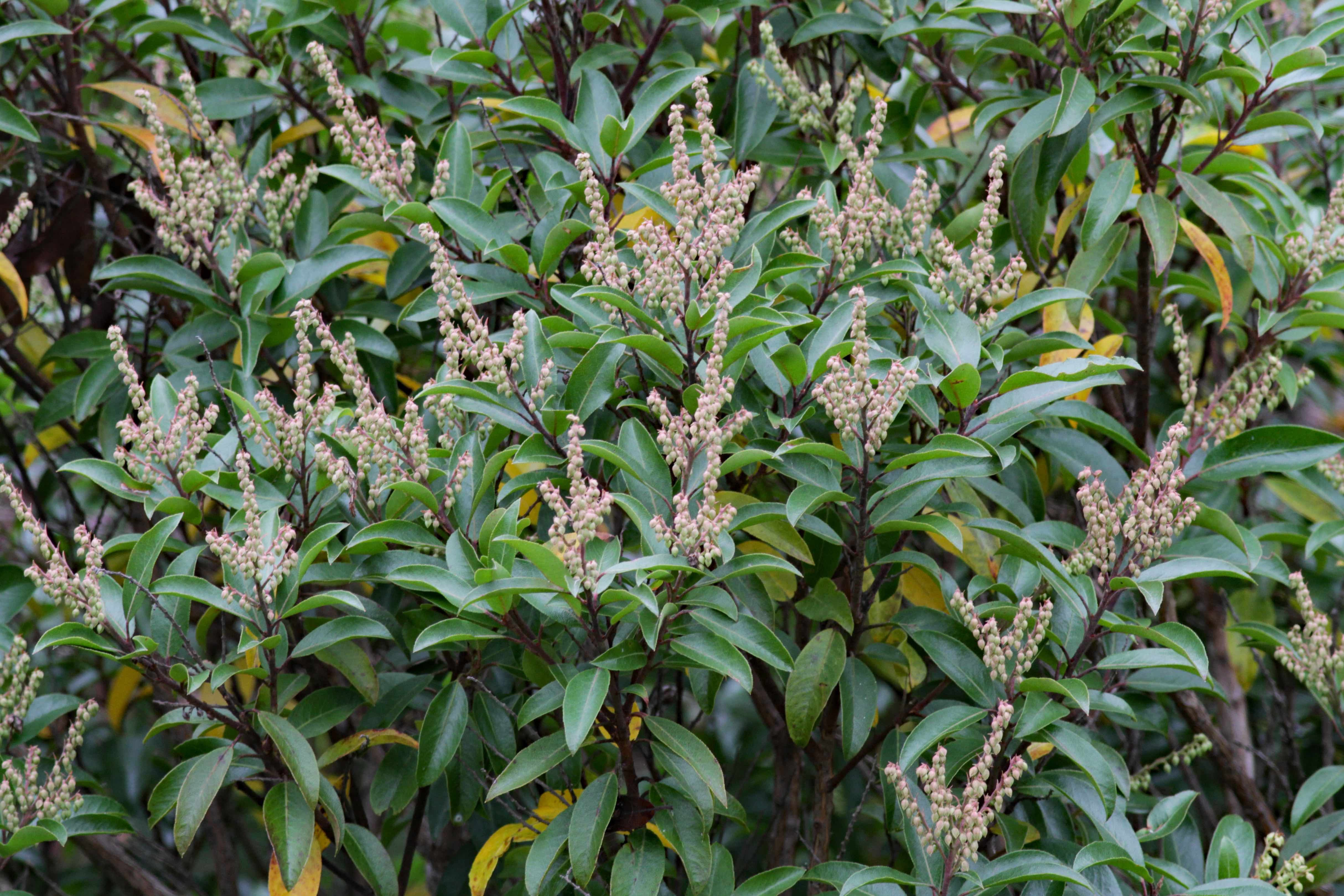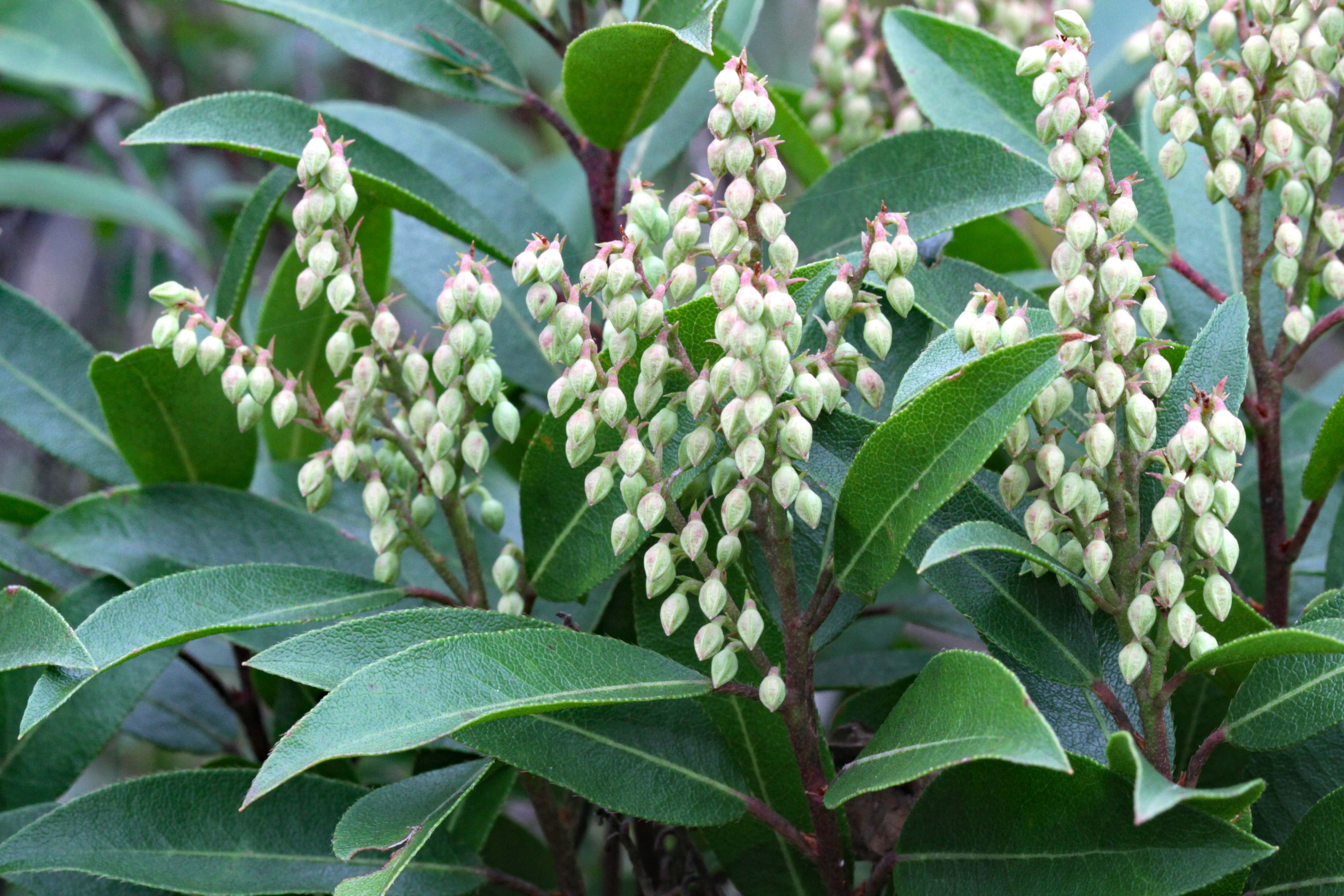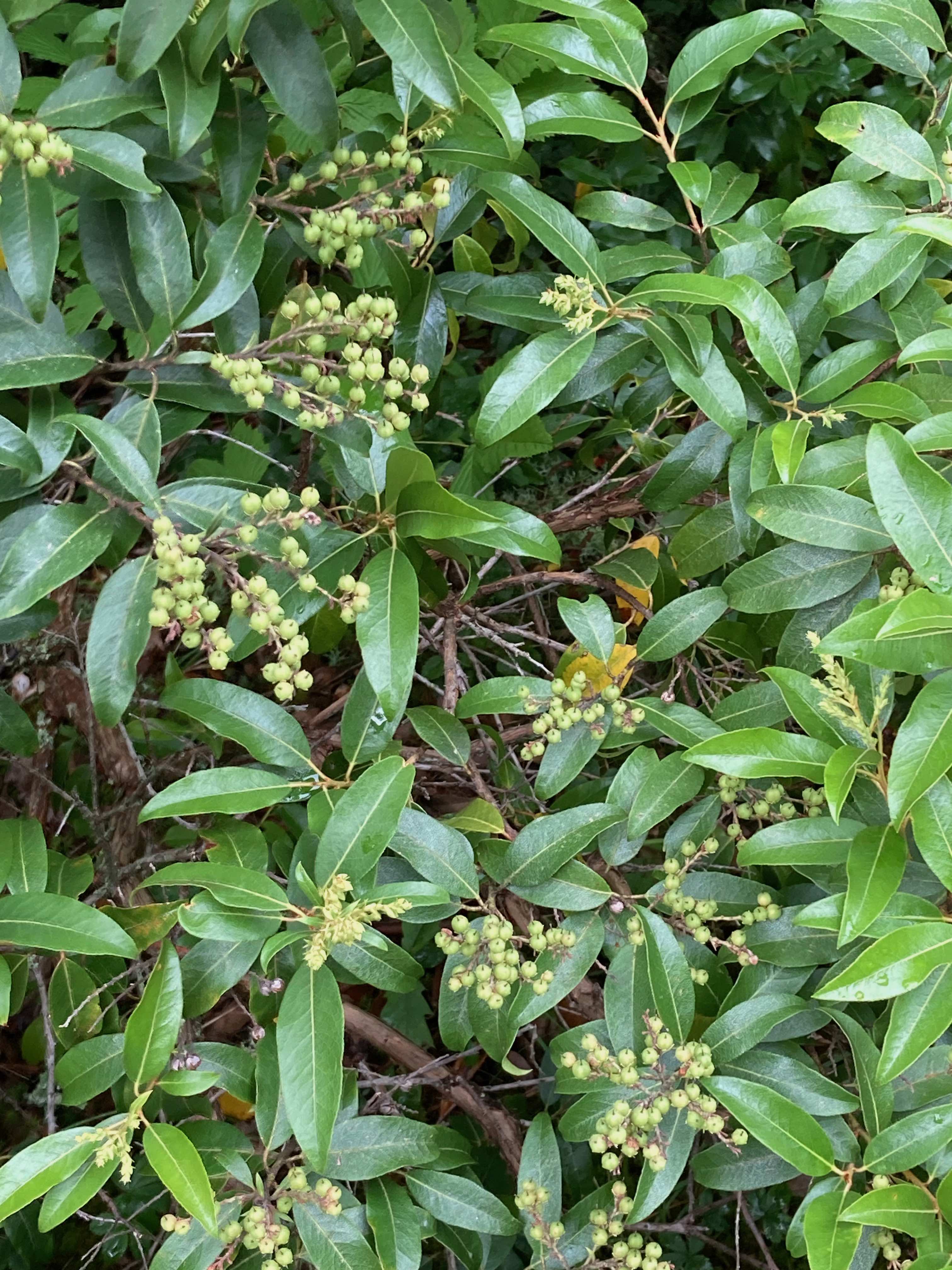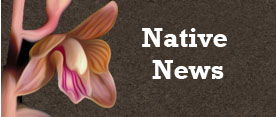NC Native Plant Society:
Plant Details
Pieris floribunda
Mountain Andromeda, Evergreen Mountain Fetterbush
Scientific Name: |
Pieris floribunda |
|---|---|
Genus: |
Pieris |
Species Epithet: |
floribunda |
Common Name: |
Mountain Andromeda, Evergreen Mountain Fetterbush |
Plant Type |
Shrub |
Life Cycle |
Perennial |
Plant Family |
Ericaceae (Heath Family) |
Native/Alien: |
NC Native |
Invasive Status: |
(*Key) |
Size: |
3-6 ft. |
Bloom Color(s): |
White |
Light: |
Sun - 6 or more hours of sun per day |
Soil Moisture: |
Dry |
Bloom Time: |
May, June |
Growing Area: |
Mountains, Piedmont |
Habitat Description: |
Acid wooded slopes, heath balds at high elevations, summits of Piedmont monadnocks, sometimes escaped from cultivation. A Southern Appalachian endemic. Rare to uncommon across its NC range, but can be rather numerous at high elevations in the southern mountains close to the Blue Ridge Parkway in the Great Balsam and Pisgah ranges. Very rare to locally absent from this province north to several monadnocks in Stokes and Surry counties. It is considered a State Watch List species. |
Leaf Arrangement: |
Alternate |
Leaf Retention: |
Evergreen |
Leaf Type: |
Leaves veined, not needle-like or scale-like |
Leaf Form: |
Simple |
Life Cycle: |
Perennial |
Wildlife Value: |
Important for Wildlife |
Landscape Value: |
Suitable for home landscapes |
State Rank: |
S2: Imperiled, S3: Vulnerable (*Key) |
Global Rank: |
G4 - Apparently Secure (*Key) |
State Status: |
W1: Watch List: Rare but Relatively Secure, W6: Watch List: Regionally Rare (*Key) |
Notes: |
Very specialized habitat |
|
Pieris floribunda and Rhododendron vaseyii blossom before the trees leaf out in mid-May in the Pisgah National Forest at 5,000 foot elevations. Transylvania County, NC
Will Stuart |
|
|
Masses of Pieris floribunda covered with bright white blossoms line a 10-mile section of the Blue Ridge Parkway south of Graveyard Fields. Transylvania County, NC
Will Stuart |
|
|
Pieris floribunda blossom detail. Transylvania County, NC
Will Stuart |
|
|
Pieris floribunda along the Blue Ridge Parkway in autumn with next year's flower buds. Transylvania County, NC
Will Stuart |
|
|
Close-up of next year's flower buds. Transylvania County, NC
Will Stuart |
|
|
The developing fruit (capsules) will later turn brown and split open when ripe. Jackson Co., NC
Bettina Darveaux |
|
Links: |
|
back to top
go to plant details search
go to plant images search
go to gallery home
back to Initial p Gallery
back to orchids
back to Carnivorous Plants
back to Trilliums

